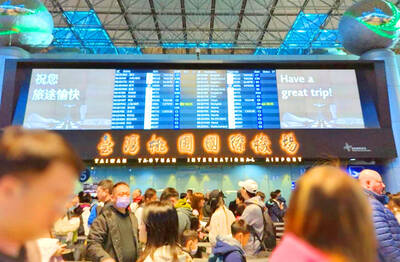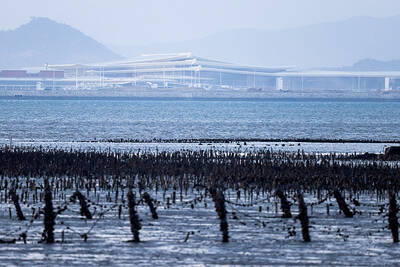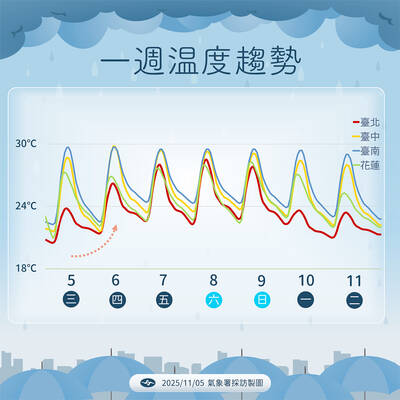The destruction in Tainan following a strong earthquake on Saturday was largely due to a geological factor called the “site effect,” which was why the city sustained more serious damage than the area of the quake’s epicenter, Central Weather Bureau (CWB) Director-General Shin Tzay-chyn (辛在勤) said.
Kaohsiung’s Meinong District (美濃), the center of the magnitude 6.4 earthquake, hardly suffered any damage, while parts of neighboring Tainan were devastated, Shin said.
He said most earthquakes in southern Taiwan are concentrated along a fault line stretching from Jiasian (甲仙) in Kaohsiung to Sinhua (新化) in Tainan.
The Jiasian quake in 2010, for example, occurred along that fault line, about 10km from Meinong, and was of the same magnitude as Saturday’s temblor, Shin said.
There were also other similarities, he said.
Both earthquakes were centered in a mountainous area at a shallow depth — the one on Saturday at 16.7km below the surface and the Jiasian quake at 22.6km, he said.
However, Shin said that while the Jiasian quake caused no damage or casualties, Saturday’s quake toppled several structures in Tainan, including a 17-story residential complex, killing at least 38 people.
Lin Tzu-wei (林祖慰), head of the bureau’s Earthquake Forecast Center, said the Meinong earthquake was more destructive mainly because of Tainan’s soft soil.
Surface ground motion can be strongly amplified in such geological conditions, which are known as the “site effect,” Lin said.
The seismic waves in Saturday’s earthquake apparently traveled northwest from the epicenter to Tainan through the soft soil in the Chianan Plain, which stretches from Tainan to Chiayi County to the north, Lin said.
He said structural factors in the city also contributed to the devastation caused by the earthquake.

Three Taiwanese airlines have prohibited passengers from packing Bluetooth earbuds and their charger cases in checked luggage. EVA Air and Uni Air said that Bluetooth earbuds and charger cases are categorized as portable electronic devices, which should be switched off if they are placed in checked luggage based on international aviation safety regulations. They must not be in standby or sleep mode. However, as charging would continue when earbuds are placed in the charger cases, which would contravene international aviation regulations, their cases must be carried as hand luggage, they said. Tigerair Taiwan said that earbud charger cases are equipped

Foreign travelers entering Taiwan on a short layover via Taiwan Taoyuan International Airport are receiving NT$600 gift vouchers from yesterday, the Tourism Administration said, adding that it hopes the incentive would boost tourism consumption at the airport. The program, which allows travelers holding non-Taiwan passports who enter the country during a layover of up to 24 hours to claim a voucher, aims to promote attractions at the airport, the agency said in a statement on Friday. To participate, travelers must sign up on the campaign Web site, the agency said. They can then present their passport and boarding pass for their connecting international

UNILATERAL MOVES: Officials have raised concerns that Beijing could try to exert economic control over Kinmen in a key development plan next year The Civil Aviation Administration (CAA) yesterday said that China has so far failed to provide any information about a new airport expected to open next year that is less than 10km from a Taiwanese airport, raising flight safety concerns. Xiamen Xiangan International Airport is only about 3km at its closest point from the islands in Kinmen County — the scene of on-off fighting during the Cold War — and construction work can be seen and heard clearly from the Taiwan side. In a written statement sent to Reuters, the CAA said that airports close to each other need detailed advanced

UNKNOWN TRAJECTORY: The storm could move in four possible directions, with the fourth option considered the most threatening to Taiwan, meteorologist Lin De-en said A soon-to-be-formed tropical storm east of the Philippines could begin affecting Taiwan on Wednesday next week, the Central Weather Administration (CWA) said yesterday. The storm, to be named Fung-wong (鳳凰), is forecast to approach Taiwan on Tuesday next week and could begin affecting the weather in Taiwan on Wednesday, CWA forecaster Huang En-hung (黃恩鴻) said, adding that its impact might be amplified by the combined effect with the northeast monsoon. As of 2pm yesterday, the system’s center was 2,800km southeast of Oluanbi (鵝鑾鼻). It was moving northwest at 18kph. Meteorologist Lin De-en (林得恩) on Facebook yesterday wrote that the would-be storm is surrounded by